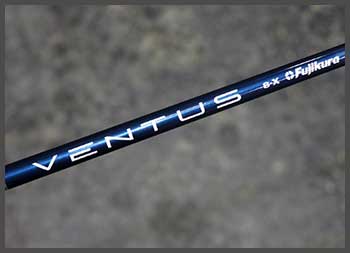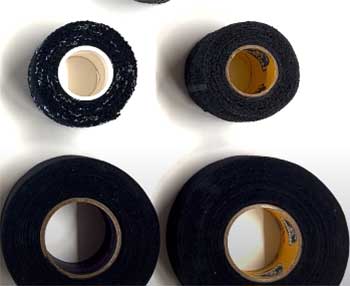If you’re an avid golfer, you know how crucial it is to have the right equipment, and that doesn’t just mean your clubs. Your shafts can significantly impact your game, and among the most popular are the Fujikura Air Speeder 45 and Ventus Blue. But how do these two match up head-to-head?
Let’s break it down.
A Brief Comparison Table
| Feature | Fujikura Air Speeder 45 | Ventus Blue |
| Weight | 45 grams | Varies |
| Swing Speed | Fast | Moderate |
| Stability and Control | Good, may be less in wind | Excellent |
| Price | More Affordable | Premium |
| Player Profile | Speed and distance focused | Control and consistency focused |
| Main Technology | Multi-material bias core | VeloCore Technology |
| Ideal For | Senior players, those with slower swing speeds | Players with fast swing speeds looking for consistency |
Unpacking the Fujikura Air Speeder 45

Starting off with the Fujikura Air Speeder 45, it’s important to note that this is not your average golf shaft.
Known for its unique balance of lightweight structure and strength, the Air Speeder 45 has garnered quite a reputation.
But why do golfers love it?
Let’s dive deeper into its pros and cons.
- Pros of Fujikura Air Speeder 45
The Air Speeder 45 boasts several strengths that set it apart. For one, it’s super lightweight, which allows for faster swings. Its multi-material bias core improves stability and control, providing unparalleled precision.
Additionally, the Air Speeder 45 offers excellent kick velocity due to its Maximum Carbon Fiber Content (MCFC) design.
- Cons of Fujikura Air Speeder 45
However, the Air Speeder 45 isn’t without its drawbacks. Some golfers find its lightweight nature challenging to control, especially in windy conditions. The advanced design may also be overwhelming for beginners.
Exploring the Ventus Blue
Moving on to the Ventus Blue, this shaft has made waves in the golf world thanks to its innovative design and high-quality performance. Ventus Blue features the VeloCore technology, providing unmatched stability and control.
But is it the right fit for you? Here’s what you need to know.
- Pros of Ventus Blue
The Ventus Blue stands out for several reasons. Its VeloCore technology ensures maximum energy transfer to the ball, resulting in more consistent distances.
Moreover, the strategically placed ultra-high modulus Pitch 70 Ton Carbon Fiber creates a smooth feel while enhancing stability.
- Cons of Ventus Blue
On the downside, Ventus Blue might not be the best fit for golfers seeking extreme lightweight options as it’s slightly heavier than the Air Speeder 45. The higher price point may also deter some golfers.
Key Differences Between Fujikura Air Speeder 45 and Ventus Blue
While both the Fujikura Air Speeder 45 and Ventus Blue are top-quality shafts, they cater to different types of golfers. Here, we delve into their key differences in-depth to provide a clearer picture of how they stand apart.
- Weight and Swing Speed

The most noticeable difference between the two shafts is their weight.
Fujikura Air Speeder 45, as the name suggests, weighs in at a mere 45 grams.
Its incredibly lightweight design is tailored to golfers who prioritize swing speed above all else.
A faster swing speed can translate to greater distance, an advantage many golfers covet.
On the other hand, the Ventus Blue is slightly heavier, though its exact weight varies depending on its length. While this might seem like a disadvantage, it’s worth noting that a heavier shaft can offer more control, particularly for golfers with an already fast swing speed.
- Stability and Control
The Ventus Blue really shines when it comes to stability and control. It achieves this through its use of VeloCore technology, which ensures consistent performance regardless of the swing speed.
This technology, combined with a high-modulus carbon fiber construction, provides a stable, mid-launch, and mid-spin shaft ideal for players who prioritize control over speed.
Conversely, the Fujikura Air Speeder 45 also offers considerable stability, thanks to its multi-material bias core. However, some players may find it harder to control due to its ultra-lightweight design.
- Price Point
Price is another critical difference between these two shafts. Generally, the Ventus Blue is a more premium product and comes with a higher price tag.
The Fujikura Air Speeder 45, while not cheap, is generally more affordable than the Ventus Blue. For golfers on a budget, this might be a significant factor in their decision-making process.
- Player Profile
Both shafts cater to different player profiles. The Fujikura Air Speeder 45 is ideal for golfers seeking a lightweight shaft that provides speed and distance.
It’s also a great choice for senior players or those with slower swing speeds looking to add more distance to their drives.
On the other hand, the Ventus Blue is an excellent choice for players looking for a mid-launch, mid-spin shaft with unparalleled stability and control. It’s perfect for players with already fast swing speeds who want to ensure consistent performance.
When comparing the Fujikura Air Speeder 45 and Ventus Blue, it boils down to personal preference and your playing style. The Air Speeder 45 is ideal for golfers seeking lightweight options with a fast swing speed.
On the other hand, the Ventus Blue is perfect for players prioritizing control and consistency.
Also Read: Is Miura Giken Better Than Miura Premium Golf Iron?
Frequently Asked Questions (FAQ)
Let’s answer some commonly asked questions about the Fujikura and Ventus shafts to wrap up our discussion.
The Fujikura Speeder is a line of golf shafts known for their innovative design and high-quality performance. They’re designed to enhance control, stability, and swing speed, making them a favorite among many golfers.
Many professional golfers use Ventus shafts due to their excellent performance and consistency. The Ventus Blue, in particular, is a favorite thanks to its VeloCore technology, providing unmatched stability and control.
The Ventus Blue and TR shafts share many features but are designed for different player profiles. The Blue is ideal for those looking for a mid-launch, mid-spin profile, while the TR is designed for golfers seeking a lower launching, lower spinning option.
Ventus shafts are renowned for their superior stability and control, thanks to the VeloCore technology. They ensure maximum energy transfer to the ball, leading to more consistent distances. Additionally, their high-quality materials and innovative design make them a top choice for golfers of all levels.
Final Thoughts
Choosing between the Fujikura Air Speeder 45 and Ventus Blue may seem challenging, but understanding their pros and cons can make the decision easier.
While both shafts offer remarkable features, the ideal choice ultimately depends on your game style and preferences.
Happy golfing!

